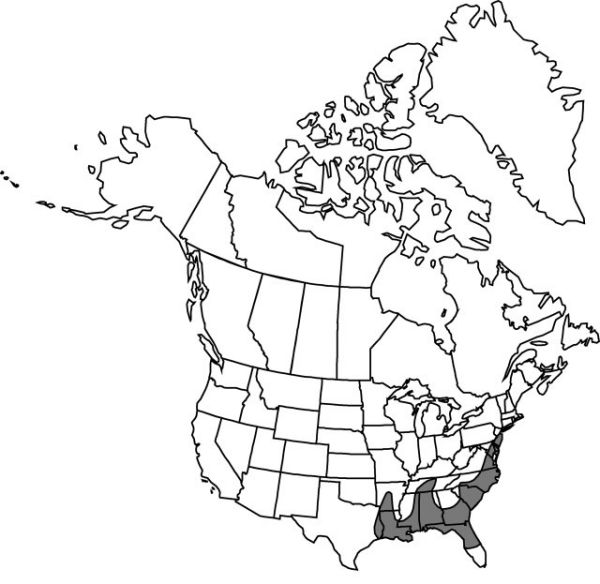Difference between revisions of "Platanthera cristata"
Gen. Sp. Orchid. Pl., 291. 1835.
FNA>Volume Importer |
imported>Volume Importer |
||
| (2 intermediate revisions by 2 users not shown) | |||
| Line 6: | Line 6: | ||
|place=291. 1835 | |place=291. 1835 | ||
|year=1835 | |year=1835 | ||
| + | }} | ||
| + | |special_status={{Treatment/ID/Special_status | ||
| + | |code=E | ||
| + | |label=Endemic | ||
}} | }} | ||
|basionyms={{Treatment/ID/Basionym | |basionyms={{Treatment/ID/Basionym | ||
| Line 62: | Line 66: | ||
|publication title=Gen. Sp. Orchid. Pl., | |publication title=Gen. Sp. Orchid. Pl., | ||
|publication year=1835 | |publication year=1835 | ||
| − | |special status= | + | |special status=Endemic |
| − | |source xml=https:// | + | |source xml=https://bitbucket.org/aafc-mbb/fna-data-curation/src/2e0870ddd59836b60bcf96646a41e87ea5a5943a/coarse_grained_fna_xml/V26/V26_1162.xml |
|subfamily=Orchidaceae subfam. Orchidoideae | |subfamily=Orchidaceae subfam. Orchidoideae | ||
|tribe=Orchidaceae tribe Orchideae | |tribe=Orchidaceae tribe Orchideae | ||
Latest revision as of 21:11, 5 November 2020
Plants 18–90 cm. Leaves 2–4, spreading to ascending, gradually reduced to bracts distally; blade linear-lanceolate to lance-oblong, 5–21 × 1–3 cm. Spikes dense. Flowers resupinate, showy, orange; dorsal sepal entire or sometimes emarginate; lateral sepals spreading; petals obovate to oblong-elliptic, margins fringed throughout to entire; lip porrect, ovate to ovate-oblong, without basal thickening, 4–8 × 4–8 mm, margins deeply filiform-fringed; spur slenderly cylindric (mouth triangular or keyhole-shaped), 4–10 mm; rostellum lobes scarcely to strongly curved downward, rarely distally retrorse, digitate; pollinaria with stalks curved downward; pollinia remaining enclosed in anther sacs; viscidia presented forward, nearly perpendicular to ± parallel to lip, orbiculate; ovary slender, 7–13 mm. 2n = 42.
Phenology: Flowering (Jun–)Jul–Aug(–Sep).
Habitat: Moist sandy and peaty meadows, marshes, prairies, pine savannas, wet wooded flats, seeping slopes, sphagnum bogs
Elevation: 0–800 m
Distribution

Ala., Ark., Del., Fla., Ga., La., Md., Mass., Miss., N.J., N.Y., N.C., Pa., S.C., Tenn., Tex., Va.
Discussion
The rostellum lobes in Platanthera cristata normally are only slightly curved, presenting the viscidia in a generally forward position. Considerable variation is apparent, however, and sometimes a marked curvature similar to that in P. chapmanii is seen, apparently presenting the viscidia downward. These orientations are difficult to assess in distorted herbarium material, and the species is in need of further study. The triangular mouth of the spur of P. cristata is distinctive, however, and can aid in determination of confusing material (see also below and the discussion under 29. P. chapmanii).
Platanthera pallida P. M. Brown was recently proposed to accommodate two populations of pale-flowered plants on Long Island, New York. Their distinctive nature has long been apparent. In the field, pollination normally is rapid and the flowers senesce while small and yellowish, but in cultivation in the absence of pollinators, flowers remain open for an extended period during which the lips elongate markedly and the flowers fade to a dull white. Hence they suggest P. ×canbyi (Ames) Luer [P. blephariglottis × P. cristata], but they differ in their much shorter spurs.
Plants of Platanthera pallida were reported to differ from P. cristata in shorter spurs, entire dorsal sepals, and lateral sepal and lip orientation. The range of spur lengths in P. cristata, however, is much greater than specified and in fact includes the range of P. pallida. Dorsal sepals with entire margins are commonly seen also in P. cristata, and those of P. pallida may be deeply emarginate. Lateral sepal and lip orientation tend to differ in the two taxa, but the conditions typical of each taxon can be found in the other. The keyhole shaped orifice of the spur in P. pallida mentioned by Brown is a unique feature, but it is present in only a small percentage of individuals and completely intergrades to the triangular orifice of P. cristata. Furthermore, superficially similar pale-flowered plants from farther west on Long Island are more similar to typical P. cristata and hence possibly indicative of a cline. The plants described as P. pallida therefore appear to represent neither a distinct species nor are they merely hybrids; they seem to be partially stabilized introgression products and potentially useful subjects for evolutionary study.
Hybrids of Platanthera cristata with P. blephariglottis are P. ×canbyi (Ames) Luer and with P. ciliaris are P. ×channellii Folsom; until recently the latter was confused with P. chapmanii.
Selected References
None.